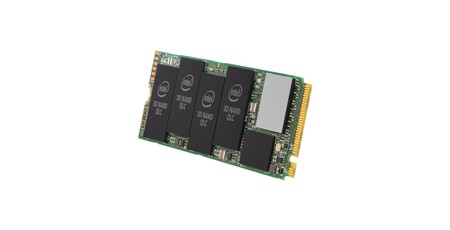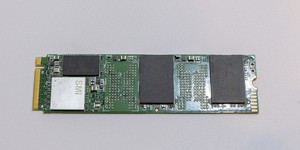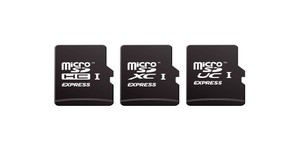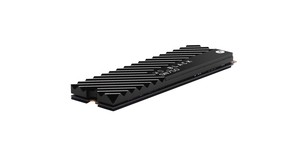Intel launches QLC-based NVMe SSD 660p family
August 8, 2018 | 10:55
Companies: #intel #intel-micron-flash-technologies

Intel has beaten Samsung to the punch with the first consumer-grade quad-level cell (QLC) SSD launch, the Intel SSD 660p family, though has opted for the faster but less common Non-Volatile Memory Express (NVMe) interface over traditional SATA.
Quad-level cell (QLC) flash, which holds four bits per memory cell compared to the one bit of single-level cell (SLC), two bits of multi-level cell (MLC), and three bits of triple-level cell (TLC) flash components, is designed to dramatically increase the storage capacity of solid-state storage devices or allow companies to produce the same capacities as today's devices at a lower cost and power draw by using fewer components. While it has its own drawbacks, including a reduction in performance over other flash types, QLC is set to be the next big thing - and while Samsung has teased that it will release the first consumer-grade SATA-connected QLC SSDs later this year Intel has beaten it to the consumer market with its own QLC-based, NVMe-connected consumer devices: the Intel SSD 660p series, formerly known as Neptune Harbor.
Based on the 64-layer 3D-NAND flash chips produced by Intel-Micron Flash Technologies (IM Flash), a joint venture the companies are in the process of effectively dissolving, the M.2 2280 NVMe drives work around the performance impact of QLC by allowing the device to operate in both QLC and SLC modes. Each drive has a portion of NAND flash which can operate in SLC or QLC modes; as the amount of data on the drive increases beyond that which can be stored on SLC flash it is dynamically converted to QLC to boost capacity at the cost of performance - and back again if the amount of data stored decreases in the future. At first, the drives will have around 14 percent of their capacity available in high-performance SLC, dropping to around one percent when filled.
It's a clever trick, and one which allows Intel to claim sequential read and write speeds of up to 1,800MB/s and random 4K read and write throughput of up to 220,000 input/output operations per second (IOPS) - but, it must be remembered, these figures apply purely in SLC-cached mode, with the company failing to provide equivalent figures for a near-capacity drive running in QLC mode. The figures are also heavily dependent on capacity, with the entry-level 512GB model offering a reduced 1,500MB/s sequential read and 1,000MB/s sequential write along with a 90,000 IOPS random read throughput.
Full technical details on the three models, which launch in 512GB, 1TB, and 2TB capacities, are available on Intel's Ark site. UK pricing for the devices has not yet been confirmed, with US retail pricing set at $99, $199, and $399 respectively (around £77, £154, and £309 respectively, excluding taxes).

MSI MPG Velox 100R Chassis Review
October 14 2021 | 15:04








Want to comment? Please log in.